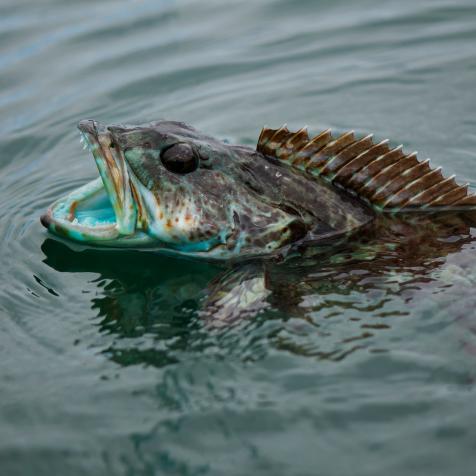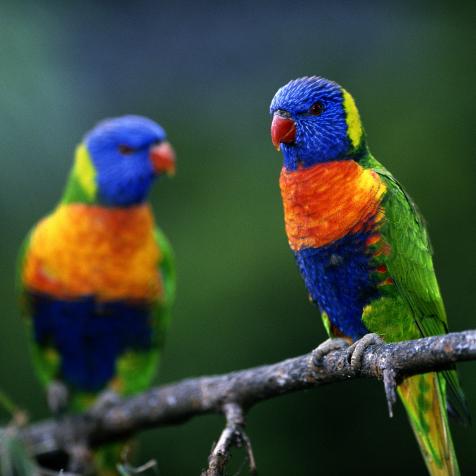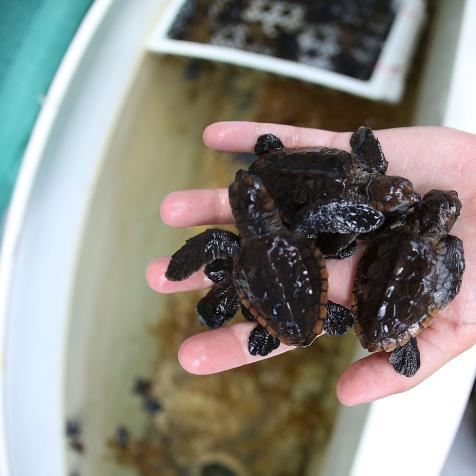
Steve Woods Photography
Shark Tracking is Protecting Endangered Species like the Great White and Tiger Shark
Scientists use a variety of methods, from acoustic tracking to body cams, to collect vital information on where sharks live, their numbers, their behavior, and environmental health.
See scientists at work using these technologies to help study and save the sharks. Stream SHARK WEEK now on discovery+.
Tracking sharks is just one of the ways to protect the more than 500 listed species living in our oceans.
An estimated 100 million sharks are killed each year through overfishing, finning (where only the fins are removed and the body thrown back), and accidental catch (bycatch). That is, by any definition, an environmental disaster. To support sharks and stop fishing fleets, stripping the seas of apex predators means gathering more data on their lives.

PhotoStock-Israel
Research tag on sandbar shark fin.
Tagging is the most important and well-used method of tracking. Attaching tags that transmit sound or satellite radio signals tells us more about where sharks are and the size of their territories, or how far they migrate to breed. Others give detailed data on sounds the animal makes and picks up from its surroundings, their diet and interaction with other species.
Acoustic telemetry transmitters give off a series of sound pulses that allow researchers to track sharks from a boat in real time over hours or days. Passive acoustic tags are designed to work for longer periods over months or years, using receivers on the ocean floor to pick up their signal. The technology is similar, transmitting the shark’s unique ID with date and time, but passive tags provide long-term movement data.
Satellite-enabled technology such as smart position-or temperature-transmitting (SPOT) tags send data to satellite networks when the shark surfaces. Others, like the pop-up satellite archival tag (PSAT), are data loggers that are eventually released and float to the surface to transmit, rather than being retrieved from the animal, like the SPOT tag.
Tiger sharks were the species chosen for a long-term (two or more years) satellite tag study by researchers working with the Bermuda Shark Project. What they discovered was that tiger sharks have migration patterns similar to birds or turtles, making journeys thousands of miles into the north Atlantic. One shark that the team named Harry Lindo traveled more than 27,000 miles (44,000 km).
“Understanding how these animals use the oceans is the first step toward effective conservation,” said tagging team co-leader Guy Harvey. “Protecting migratory species is a real challenge because they can be found in such a wide area.”
Large, great white sharks are among the most studied shark species with their explosive hunting tactic of attacking prey from below, jumping out of the water with it clamped in their jaws. Scientist teams have attached camera tags to their fins loaded with sensors to capture highly detailed data on their surroundings and body position, but also to study breach attacks and predatory behavior at depth both day and night.

jamesbenet
Technology developed for the Hubble space telescope could actually benefit sharks.
An even larger species–the whale shark, the world’s biggest fish, growing up to 65 feet (20 m) long–is benefiting from technology engineered for NASA’s Hubble space telescope. Marine biologist Brad Norman co-created an online photo-identification database that uses imaging algorithms adapted from the Hubble program to recognize sharks by their unique constellations of skin markings.
People are encouraged to take photos of whale sharks when they spot them and upload them, so researchers can add them to maps of population hotspots and migration routes.
Whale sharks are one of many species targeted by the fishing industry for their fins. Their numbers are also threatened by bycatch and climate change, leading to worldwide populations dropping by 50 percent over the past 75 years.

by wildestanimal
Tagging whale sharks is helping long-term conservation efforts.
Environmental group Oceana thinks it has a solution to shark overfishing and bycatch with an ambitious satellite tracking program that overlays blue shark tag data on information about fishing vessel locations from Global Fishing Watch. Although the numbers of tagged sharks were small, it has already provided data that will help to restrict fishing bycatch and improve long-term conservation efforts.
Discovering just how many sharks there are left in our oceans is a monumental task. But it could be made easier using environmental DNA, or eDNA. Studies in 2017–18 showed that sampling DNA from seawater provided a more accurate picture than either cameras or scuba diving expeditions of shark species and populations in a region.


















